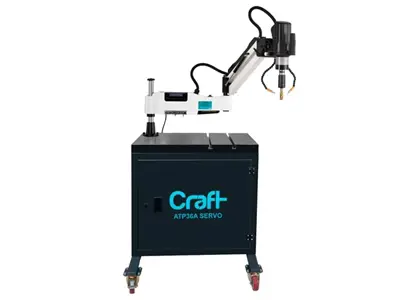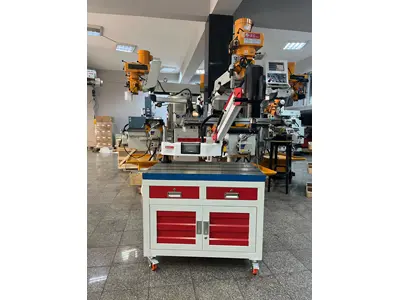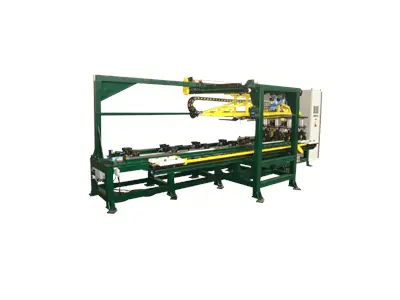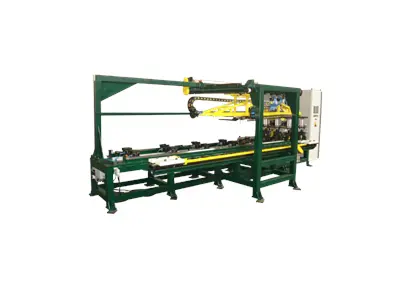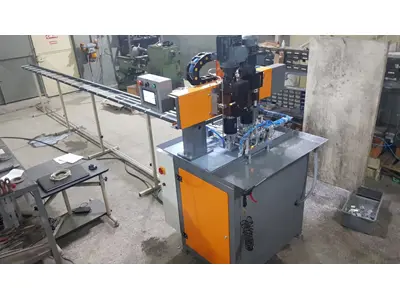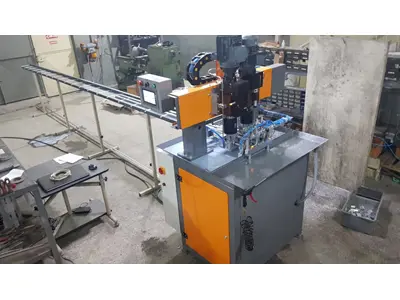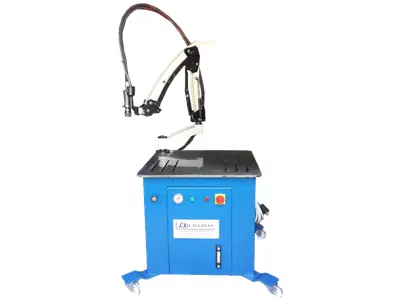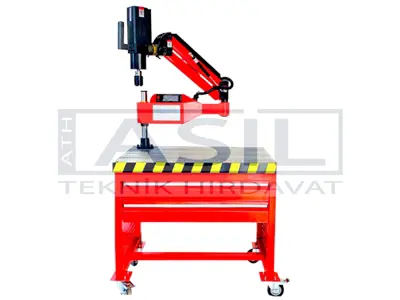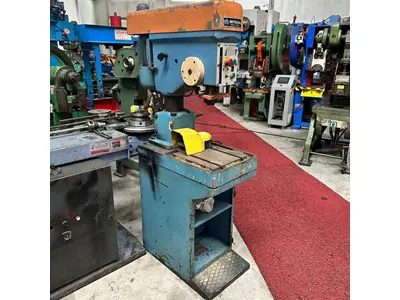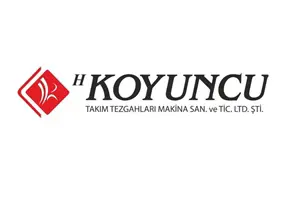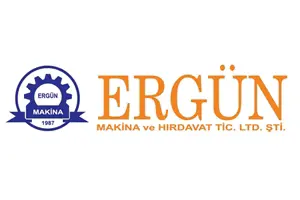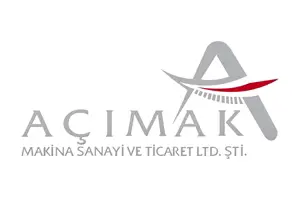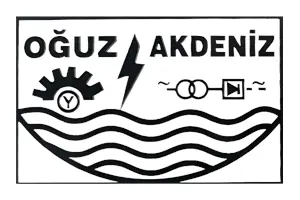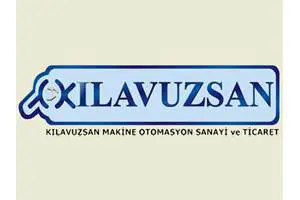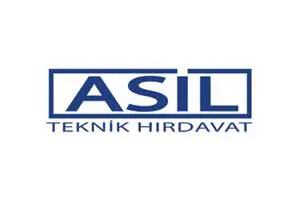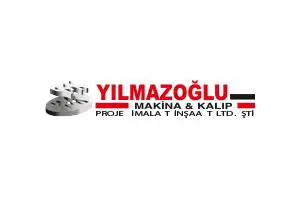What is a Guide Drawing Machine?
A guide drawing machine is a device used especially in the textile industry. It is used for a process that involves pulling or stretching materials such as fabric, textiles, or wire in a specific direction. The primary purpose of a guide drawing machine is to bring the material to a certain level of tension or size.
Guide drawing machines are commonly used in the textile industry to adjust the size and properties of fabrics or in metal processing where metal wires can be drawn to the desired size or hardness using a guide machine.
Guide drawing machines can be found in various designs and capacities. Essentially, these machines are equipped with a drum or drawing roller that allows the material to be pulled at a certain speed or tension level. Their usage is regulated through a control mechanism that ensures the material meets the desired specifications, thus enhancing product quality in industrial production processes.
Types of Guide Drawing Machines
Guide drawing machines can vary depending on the industry they are used in and the type of application. Let's look at some types of guide drawing machines below;
- Hydraulic guide drawing machines use hydraulic power to perform the drawing process. Hydraulic systems are mechanisms that transmit and control mechanical force using fluid pressure. Hydraulic guide drawing machines include hydraulic cylinders, pump units, valves, and other hydraulic components.
- Electric guide drawing machines use electric energy to perform the pulling or stretching of materials. These machines are widely used in industrial production processes to adjust the size, thickness, or tension of materials.
This is not an exhaustive list of the general types of guide drawing machines, as machines of different types can be found for specific industrial applications. Guide opening machines are important tools used to optimize material processing processes and achieve desired specifications.
Operating Principle of Guide Drawing Machines
Guide drawing machines are commonly used in applications where materials need to be drawn or tensioned in a specific manner, such as in the textile industry. The operating principle of these machines involves a system that pulls the material at a certain speed or tension level. The basic operating principle of guide drawing machines can be outlined as follows;
- Material Preparation: The first step is the material adequately prepared for the process. For example, if it is to be used in the textile industry, materials such as fabric or yarn are fed into the machine.
- Drum or Roller System: The main component of a guide drawing machine is a drum or roller system through which the material passes. This system pulls the material at a certain speed or tension level. The machine user or operator can adjust the speed or tension level of the drum.
- Guidance and Control: As the material passes through the drum or roller system, it is guided by guiding elements or control mechanisms. These guiding elements are adjusted to ensure the material meets the desired specifications. For example, in the textile industry, guiding elements are used to adjust the width or tension of the fabric.
- Measurement and Adjustment: Guide drawing machines are typically equipped with measurement and control systems. These systems continuously measure the pulling speed or tension of the material and provide feedback to the operator. This feedback helps the operator adjust the machine correctly.
After passing through the drum or roller system, the material emerges with the desired specifications. Depending on the process, the material may be thinner, wider, smoother, or more tensioned, all based on preparing the material for the application. Guide drawing machines are essential tools used to reach specific product or material specifications. These machines provide precise control to ensure the material meets the desired size, thickness, tension, or other properties.
Applications of Guide Drawing Machines
Guide drawing machines are significant equipment used in various industries and applications. Examples of applications of guide drawing machines include;
- Textile Industry: In the textile industry, guide drawing machines are used to adjust the width, thickness, and tension of fabrics, ensuring textile products meet the desired specifications.
- Metal Processing Industry: Metal wires are drawn to a specific diameter or hardness using guide drawing machines, commonly used in metal product manufacturing.
- Plastic Processing Industry: Used to adjust the thickness, width, or shape of plastic materials. They are used in applications such as producing plastic foils, sheets, or profiles.
- Rubber Production: Used to adjust the thickness and properties of rubber bands or coatings. Widely used in the manufacturing of automobile tires and other rubber products.
- Glass Processing Industry: Used in glass processing applications such as glass tube or fiber production to adjust the diameter, thickness, or shape of the glass.
- Wood Processing Industry: Used to bring wood logs or boards to certain dimensions, commonly used in furniture production and woodworking.
- Food Industry: Used in food processing industries for preparing food items like flour, pasta, biscuits, and sugar products. They are used to adjust the thickness or shape of the dough.
- Sheet Metal Processing: Used to adjust the thickness and dimensions of sheet metal products. This is crucial for manufacturing metal sheets or plate metal products.
Guide drawing machines are precision processing tools used to ensure materials meet the desired size, thickness, tension, or other properties. Therefore, they are widely used in various industries and applications.
Guide Drawing Machine Prices
Guide drawing machine prices can vary depending on several factors. These factors include the type of machine, capacity, features, manufacturer brand, technology used, and geographic location, among other factors. Whether a new or used machine is being purchased can also affect the price.
The price range of guide drawing machines can be quite wide. Smaller and basic models are generally more affordable, whereas larger capacity machines with special features may have a higher price tag. Furthermore, professional machines designed for industrial use tend to be more expensive than home-use machines.
To give an approximate price, a basic guide drawing machine's price is usually in the range of thousands of dollars or more. Industrial guide drawing machines with larger capacities and special features can reach tens of thousands of dollars.
Prices can vary over time and may fluctuate based on market conditions, brands, and regions. Before purchasing a guide drawing machine, it is important to select a model that meets your capacity and feature requirements, compare prices from different manufacturers and sellers, and consider your budget. Additionally, evaluating warranties, service, and maintenance offerings may also be necessary.
